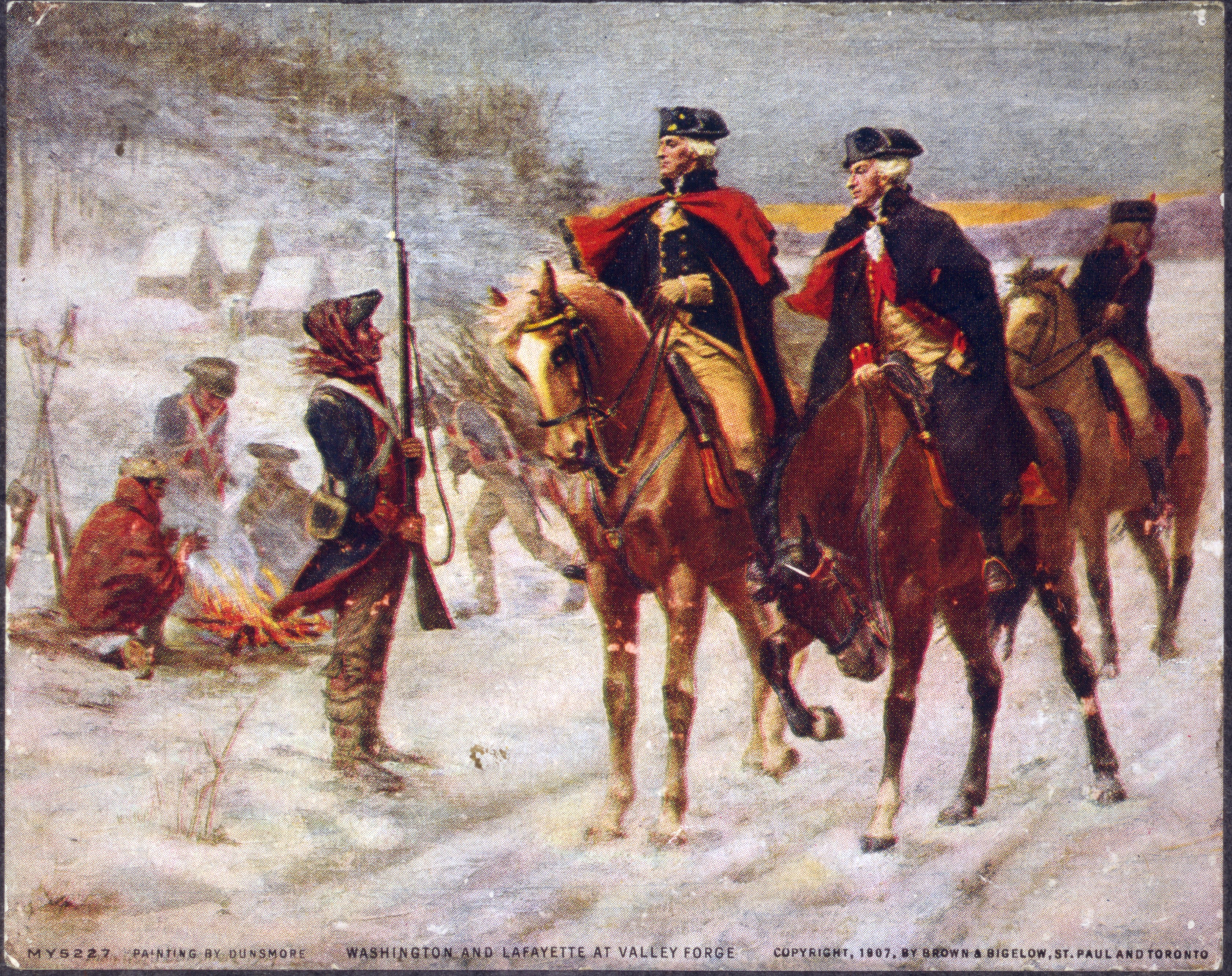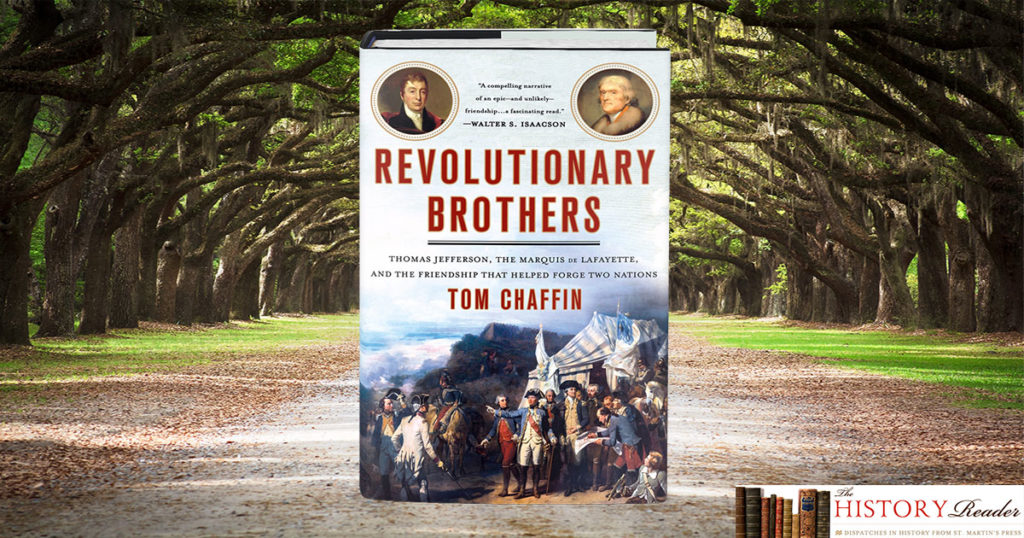by Tom Chaffin
In our third featured excerpt from Revolutionary Brothers, the Continental Army celebrates the French alliance as a twenty-one-year-old Lafayette proves his worth to General Washington.

Originally published by Brown & Bigelow, St. Paul and Toronto in 1907, this image is in the public domain via Wikicommons {{PD-US-expired}}
On May 6, 1778, crisp musket blasts fired in rapid succession into the air, cascading down the ranks of the assembled soldiers and melding into a single roar at Valley Forge. Following the splendid feu de joie— literally, fire of joy—as Pvt. Elijah Fisher of the 4th Massachusetts Regiment recorded that spring day, “the Artillery Discharged forty-four Cannon and it was followed with three Chears for the Thirteen United States of Amarica [sic].”
Other toasts and huzzahs rose. For the occasion—the celebration of Congress’s approval of the two American treaties with France—General Washington, having ordered the posting of extra sentries, even permitted the soldiers to exceed their usual rations of drink. Recalled aide-de-camp Tench Tilghman, “The troops must have more than the common quantity of liquor and perhaps there will be some little drunkenness among them.”
Lafayette, meanwhile, had donned a neckerchief of white—the color of France’s House of Bourbon. Breaching protocol, with joy and in tears, he embraced the commander in chief, declaring: “The king my master has acknowledged your Independence, and entered into an alliance with you for its establishment.”
* * * * *
Both George Washington and Lafayette had yet another reason for exultation: Regular drills implemented throughout the army over the past months at Valley Forge by the Prussia-born general baron von Steuben had brought a new polish and discipline to the troops.
The day’s celebration aside, Washington had, in fact, known of the treaties’ “good tidings” as early as April 27. Indeed, by one early account, it had been Lafayette who brought Washington the news. True or not, however, Lafayette’s renown was waxing: Circumstances beyond his control had forced the scrubbing of his “irruption into Canada.” But the skills he displayed while attempting the mission were undeniable. Moreover, at Brandywine, Gloucester, Valley Forge, and—yes—Albany the young major general had displayed bravery, resourcefulness, and leadership skills.
Indeed, in spring 1778, after Lafayette’s return from Albany, Washington’s reservations about his fitness for command had melted with the winter’s snow. More to the point, Washington appeared ever more inclined to entrust the twenty-one-year-old officer with challenging missions.

Miss the past excerpts from Revolutionary Brothers? Check out what you’ve missed this or order the book below.
TOM CHAFFIN is the author of, among other books, Giant’s Causeway: Frederick Douglass’s Irish Odyssey and the Making of an American Visionary; Sea of Gray: The Around-the-World Odyssey of the Confederate Raider Shenandoah; and Pathfinder: John Charles Frémont and the Course of American Empire. His writings have also appeared in the New York Times, the Oxford American, Time, Harper’s, and other publications. He lives in Atlanta.
